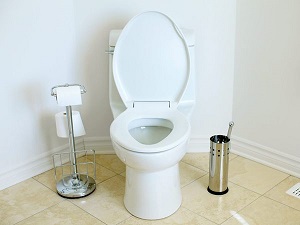As the size of the average home increases out of step with the number of residents within, the use of a ‘toilet indicator’ has been suggested as a better way to measure housing affordability in our urban areas.
Chris Isles, executive director for planning at Place Design Group, came up with the idea in an article for
The Urban Developer.
Australia’s minimum expectations for housing should be reevaluated as this sets the benchmark for housing affordability or unaffordability, he wrote.
“Our generation [is] growing up in houses often with more toilets than people. As an indicator of excess and loss of our way, I think this is a pretty telling indicator.”
In suggesting the ‘toilet indicator’ as a measure of housing affordability and size, Isles questioned how rampant house prices could be reined in with current attitudes.
“How can we possibly deliver small affordable housing, or even dare I say it, small affordable infill housing such as ‘granny flats’, secondary dwellings, terrace housing and the like if we feel a need to have a toilet for every person in the house?”
He blamed NIMBY attitudes by councils and residents which were preventing the delivery of secondary dwellings and smaller houses in existing suburbs despite ample evidence that these smaller homes would be viable.
This was creating a real urban divide, he wrote.
“Some of us are squeezing into smaller apartments or townhouses while others are enjoying a great big sprawl in an over-sized home with empty bedrooms and unused bathrooms, and a high ‘toilets per person’ ratio. Yet we still complain we have affordability issues.”
He asked whether our need for shelter be based on simply having four walls and a roof or if it should be reliant on added features such as laminate benches in the kitchen, bathroom tiles featured on The Block, or even internal walls.
Isles pointed to a policy by the mayor of London, Sadiq Khan, that planned on subsidising a new generation of ‘naked’ homes.
“The ‘Naked House’ unit will be nothing more than a well-designed shell. The houses will have no partition walls, no flooring nor wall finishes. They will only have basic plumbing and absolutely no decoration. The only recognisable part of a kitchen will be a sink.”
Khan believes these dwellings will sell for up to 40% less than standard new builds. They will also be able to be adapted to the resident’s growing needs by extending out through the rear of the property or expanding upwards via a cleverly designed mezzanine level.
Instead of substantial charges such as stamp duty burdening buyers of these ‘naked’ houses, a monthly ground rent has been proposed to further improve overall levels of housing affordability. The housing contract could also have a resell covenant that ensures the original discount remains for any future buyers, thus ensuring the dwelling remains affordable in future.
“To me, using crown land in this manner is as revolutionary as the naked houses themselves,” Isles wrote. “It’s also a concept worthy of further investigation by us here in Australia.”
Related stories:
Housing affordability: The NIMBY factor
Housing affordability deteriorating: Moody’s
New blueprint laid out for housing affordability


